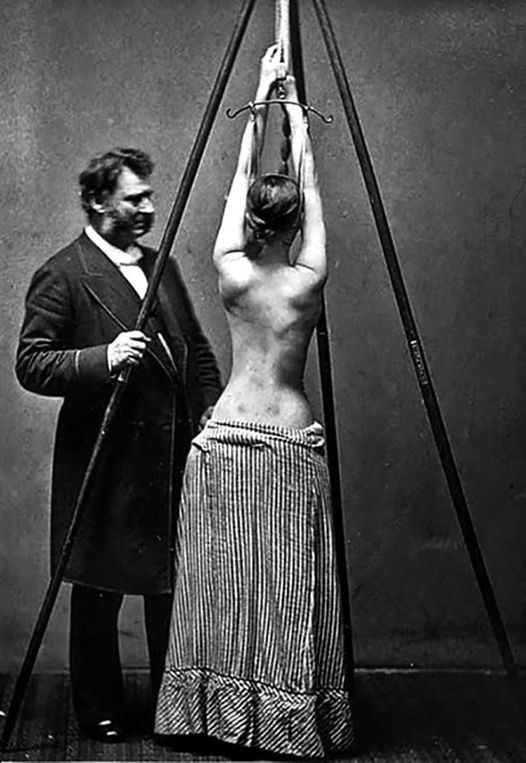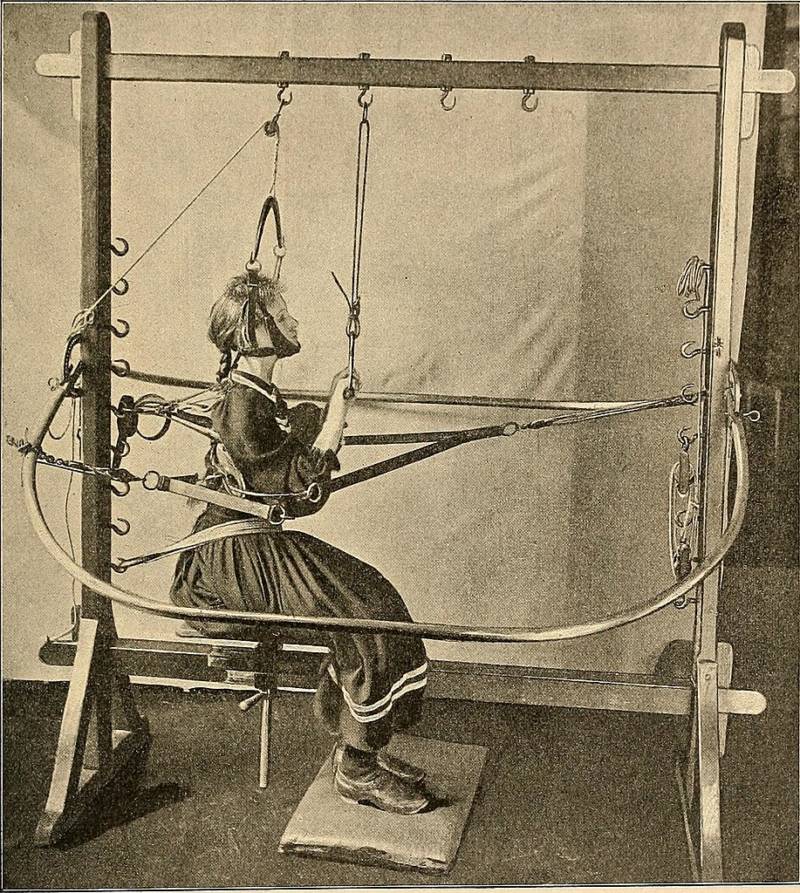Dr. Lewis Sayre treating scoliosis, checking the curvature of the spine, 1870s
Dr. Lewis A. Sayre (1820-1900) was a highly esteemed surgeon and a prominent figure in the development of orthopedics in the United States. He made significant contributions to the field and introduced innovative techniques to treat various orthopedic conditions, including scoliosis.
During the 1870s, Dr. Sayre pioneered a revolutionary procedure to address scoliosis, a condition characterized by an abnormal curvature of the spine. His approach involved a combination of spinal traction and the application of a plaster of Paris “jacket” to stabilize the spine after traction.
The procedure began with the patient being suspended, hanging by their arms or with the use of a special apparatus. This suspension allowed gravity to elongate the spine, reducing the stresses caused by the curvature. By stretching the spine, Dr. Sayre aimed to correct the abnormal alignment and relieve the associated symptoms.
While the patient was in a suspended position, a plaster of Paris jacket was carefully molded to their torso. The jacket, also known as a body cast, was designed to hold the spine in its corrected position once the suspension was discontinued. This provided external support and maintained the spine’s alignment while the patient went about their daily activities.
Dr. Sayre’s method of suspension and the use of plaster of Paris jackets revolutionized the treatment of scoliosis during that time. His technique offered a non-invasive alternative to more invasive procedures, such as spinal fusion surgery, which carried significant risks and complications.
Furthermore, Dr. Sayre’s contributions extended beyond his innovative treatments. He played a crucial role in establishing orthopedics as a recognized medical specialty in the United States. He co-founded the American Orthopedic Association and served as its president. He also helped establish the first orthopedic hospital in the country, the New York Orthopedic Hospital.
Dr. Lewis A. Sayre’s dedication and pioneering spirit significantly advanced the field of orthopedics. His traction and plaster of Paris jacket technique for treating scoliosis marked a turning point in the management of this condition. Today, his contributions continue to influence modern orthopedic practices, and he is remembered as a key figure in the history of orthopedic medicine in America.
Hits: 15









